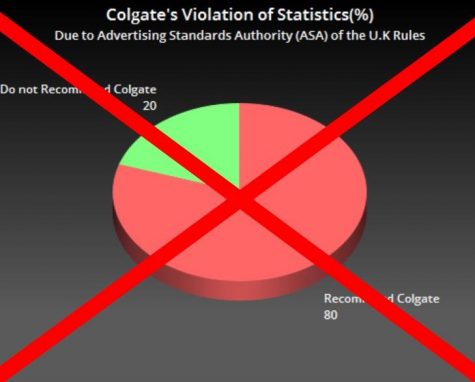Misuse of Statistics
December 5, 2016
Ever since we were young, we were taught to believe that statistics are supposed to make something easier to understand. When they are used in a misleading fashion, false statistics can trick the casual observer into believing something other than what the data shows. That right there is a misuse of statistics. In most cases, the misuse may be accidental, in other ways, it is purposeful. There are several different types of misuse including discarding unfavorable data, loaded questions, and overgeneralization.
False statistics can cause more damage than one may actually think. In the medical science, correcting a falsehood may take decades and cost several lives. Although, you may think, finding a lie in statistics may be easy, they are easy to fall for. Professional scientists, mathematicians and professional statistician all can be fooled by even a simple method. Now, do not just sit there and think “wow those professionals must not be very smart if they are taught to look for such mistakes and can not catch false statistics”. You are also being tricked. The misuse of statistics are most commonly found in advertising, politics, and the media.
With the use of discarding unfavorable data, according to wikipedia.com all a company has to do to promote a product is to find or conduct 40 studies with a 95% confidence level. If the product really is useless, all a company has to do is run one study showing that the product is beneficial and another study proving that the product is harmful. All they have to say is that with these two studies, 38 of the rest are inconclusive. Just for everyone who is not as good with numbers as what you would call statisticians, 38 is 95% of 40. Tobacco companies use this method quite often to use on billboards, commercials, and other advertisements. They also found out that the more studies you carry the better the result. Organizations such as tobacco companies do not publish every study they carry out, so they can deny the link between smoking and cancer. Anti-smoking groups and media outlets will use this method against Tobacco companies trying to prove a link between smoking and various illnesses.
According to datapine.com, in 2007, Colgate toothpaste was ordered by the Advertising Standards Authority of the U.K.. to scrap their claim: “More than 80% of Dentists recommend Colgate.” The slogan advertised on billboards in the U.K. was deemed to be a violation of the U.K. advertising rules. While the claim was found to be misrepresented. The survey allowed the participants to select one or more toothpaste brands. The ASA stated that the claim by Colgate would be understood that 80% of dentist recommend Colgate over other brands and the rest of the 20% would recommend different brands. But as we just learned, that was not what really happened. Sure, 80% of dentist choice Colgate along with several other brands but the claim was misleading by professing that 80% of dentist only recommend Colgate and nothing else.
to be misrepresented. The survey allowed the participants to select one or more toothpaste brands. The ASA stated that the claim by Colgate would be understood that 80% of dentist recommend Colgate over other brands and the rest of the 20% would recommend different brands. But as we just learned, that was not what really happened. Sure, 80% of dentist choice Colgate along with several other brands but the claim was misleading by professing that 80% of dentist only recommend Colgate and nothing else.
Along with discarding unfavorable data, professionals of all kinds can sway answers to their liking. Answers to surveys often can be controlled by the word choice of the question in a way to get a certain answer from the respondent. This is called, loaded questions. Loaded questions are often used as a way to misuse statistics for the reason that they can get the answer they want rather than having answers sprayed all around. According to brianchernicky.com, politicians often use loaded questions. A campaign could look into using this strategy of misleading information by asking potential voters if they would still vote for a certain candidate if they knew he raped and killed a girl girls earlier. This statement is painfully wrong, but that does not matter. The goal is not to prove that the statement is right or wrong, your goals are to put doubt in the minds of your voters, give the news media an exciting headline, to excite your existing supporters to continue the bashing of your candidate. In the 2008 election, the loaded question or in this case, loaded information, was “Obama is a secret Muslim.” Whether you believe that or not, this is an example of how such a rumor can affect the outcome of the presidency.
Last but certainly not least, according to Wikipedia.com overgeneralization is a misconception occurring when a statistic about a particular population is pronounced to hold among members of a group which the original population is not a representative sample. Overgeneralization is used in this example where 100% of apples are red in the summer. The statement “all apples are red” would be an overgeneralization due to the fact that the original statistic was true only of a certain type of apples not for apples as a whole. For this is just one example, a real-world example of overgeneralization misbelief can be that just because a few young people vote Democratic does not mean that all of them voted Democratic. Over generalizations take a few people and assume that of the rest.
Whether it is you are being tricked on advertisements, politics, or the media, the misuse of statistics is used everywhere. Professional scientists and mathematicians and professional statisticians all are fooled right with you. False statistics can cause harm and time to correct. False statistics come in all shapes and sizes including, the use of discarding unfavorable data, loaded questions, or over generalizations. Do not worry, there are people out in this world who are on your side, working to correct and fix these lies. But now that you are aware, before you believe everything that is put in front of your face, double check if the graph, advertisement, or rumor is even believable.














